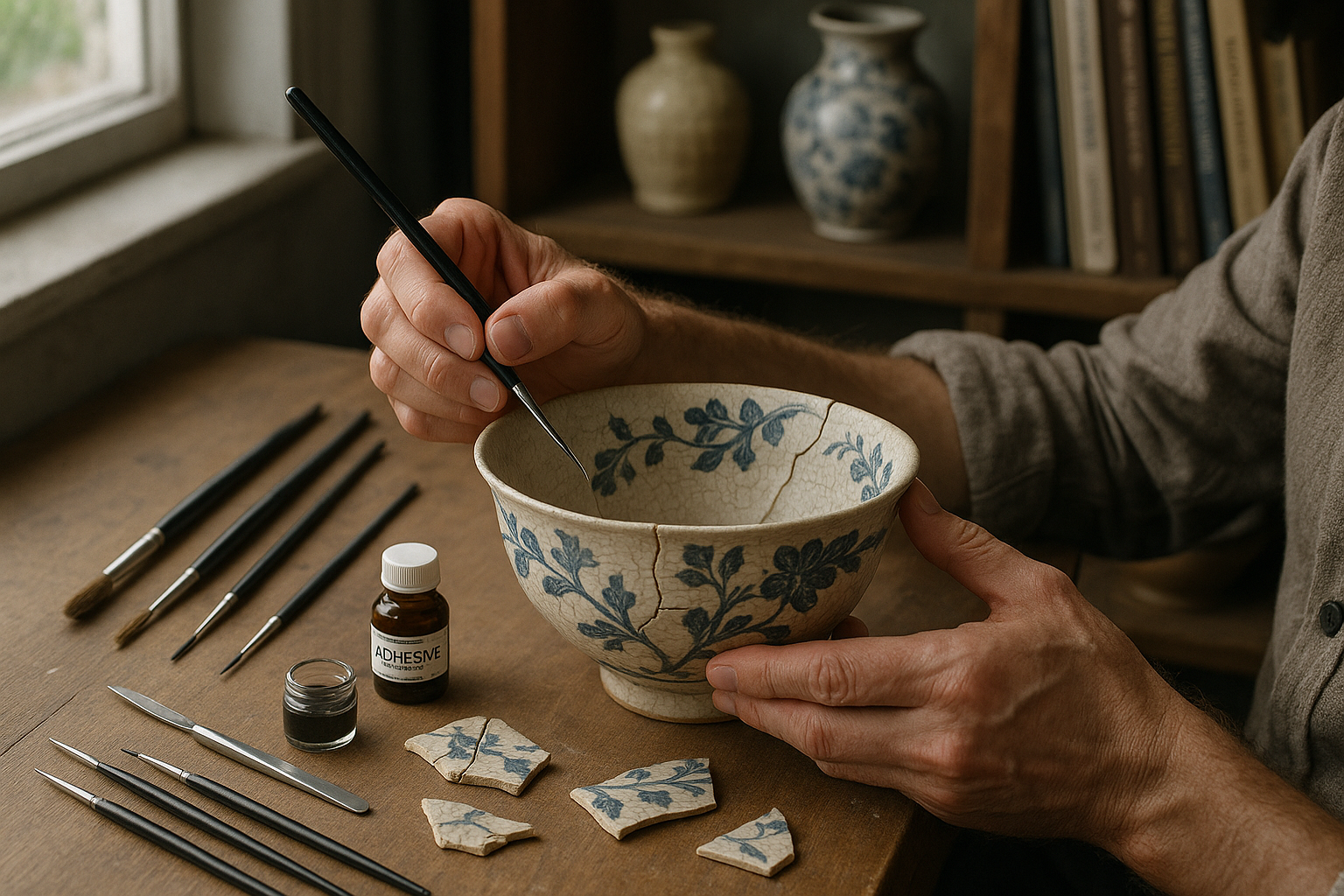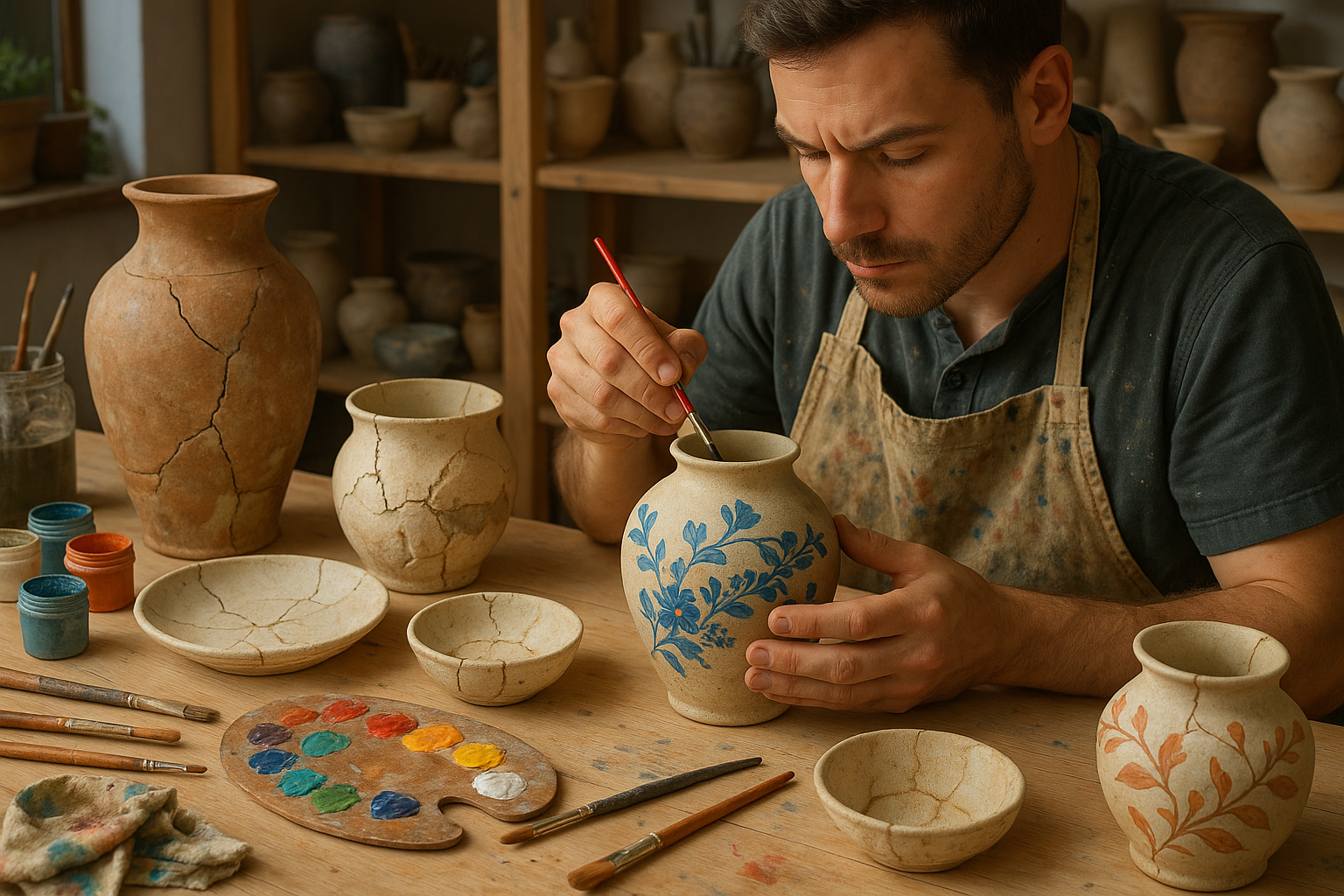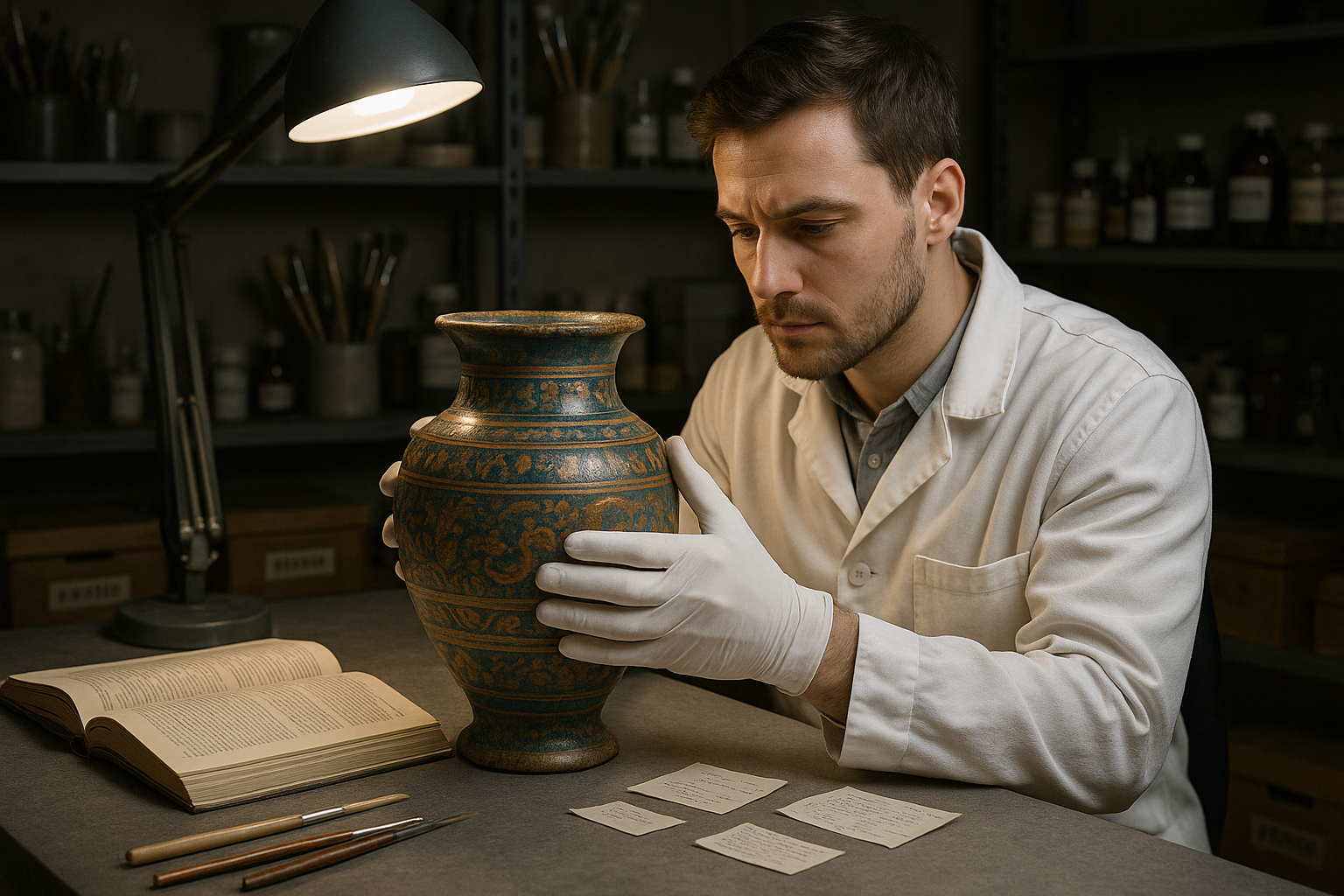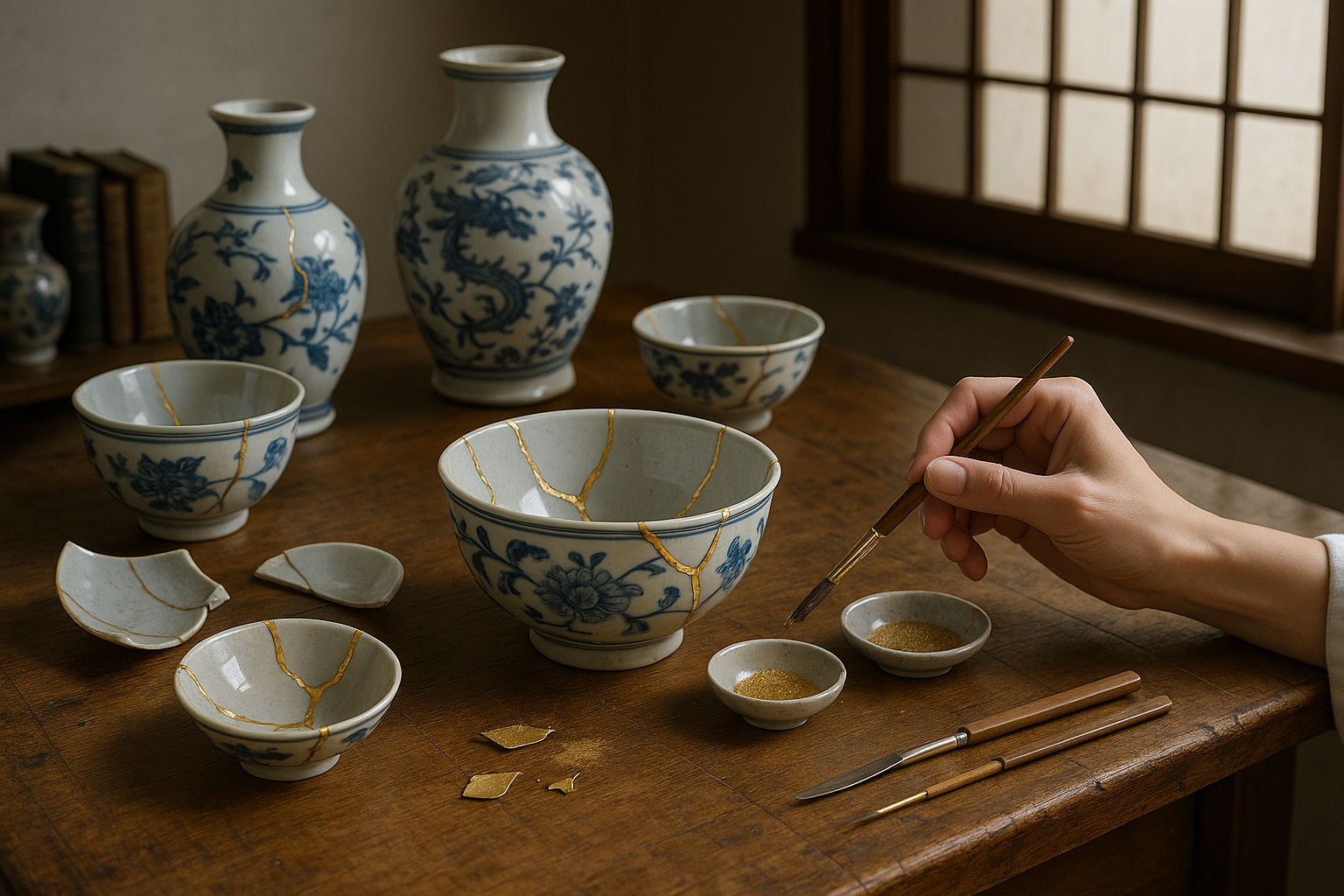In the intricate world of woodworking, where craftsmanship meets artistry, mastering the art of French polishing stands as a pinnacle achievement. This age-old technique, revered for its ability to impart a mirror-like, high-gloss finish to wooden surfaces, requires not only skill but a deep understanding of materials and methods. Whether you’re a seasoned woodworker looking to refine your skills or a curious novice eager to learn, French polishing offers a journey into the heart of traditional craftsmanship 🪑.
Imagine running your fingers across a table so smooth it feels like liquid glass, yet it emanates the warmth and character of the finest wood. That’s the magic of French polishing, a technique that has adorned the finest furniture and musical instruments for centuries. But achieving such perfection is no mere accident. It involves a meticulous process of applying shellac—a natural resin—using a specific combination of strokes, pressure, and rhythm. The result? A flawless, lustrous finish that reveals the wood’s natural beauty and depth 🌟.
In this comprehensive guide, we will delve into the essential techniques and secrets behind French polishing. We’ll explore the history and evolution of this revered method, offering insights into why it remains unmatched in achieving a distinctive finish. From understanding the types of shellac to mastering the “fad,” the pad used to apply shellac, each aspect of the process is crucial for success.
The Essentials of French Polishing
Before you even dip your pad into shellac, there are foundational elements to grasp. The type of wood, the environment, and the preparation process all play pivotal roles in the outcome. We’ll discuss how to select the right materials and tools, ensuring your workspace is primed for the task ahead. Understanding these basics is key to avoiding common pitfalls and achieving that enviable finish.
Step-by-Step Techniques
French polishing is as much about technique as it is about patience and practice. We’ll break down each step, from preparing your wood surface to applying the shellac in thin, even layers. You’ll learn how to build up the finish gradually, using the traditional “padding” method. We’ll also cover the importance of “spiriting off,” a technique that involves lightly smoothing the surface to remove excess oil and achieve a streak-free shine.
Solving Common Challenges
Even with expert guidance, challenges can arise. Issues like streaks, cloudiness, or an uneven finish can be frustrating, but they are not insurmountable. We’ll provide troubleshooting tips to help you address these problems, ensuring your work remains flawless. Understanding how to adjust your technique or materials when things go awry can make all the difference.
Beyond the Basics: Advanced Techniques
For those ready to take their skills to the next level, we’ll explore advanced techniques that can elevate your French polishing. From incorporating color and using pumice for pore filling to experimenting with different finishes, these advanced methods offer endless possibilities for customization and creativity 🎨.
As we journey through the art of French polishing, remember that this craft is as much about the process as it is about the result. Each stroke of the pad is an opportunity to connect with a tradition that spans centuries, where every application brings you closer to creating something truly unique and beautiful. So, roll up your sleeves, gather your materials, and prepare to transform your woodworking projects with the timeless elegance of French polish.
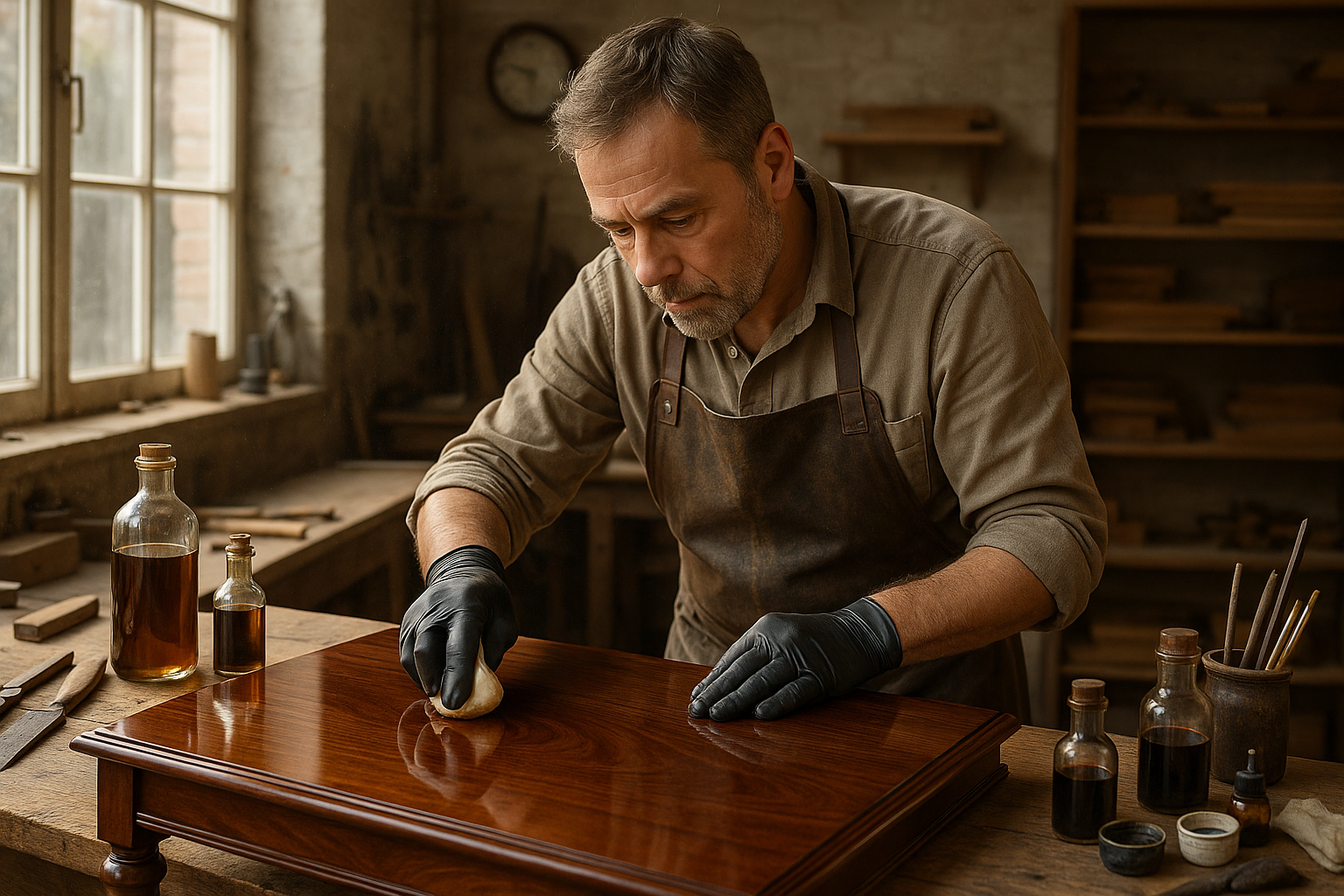
Conclusion: Mastering the Art of French Polishing
In this article, we embarked on a journey through the intricate world of French polishing, a technique renowned for its ability to impart a lustrous and flawless finish to wooden surfaces. We explored the historical significance of this art, tracing its roots back to the 18th century, and underscored its enduring relevance in modern woodworking. By revisiting the fundamental steps and techniques, we provided a clear roadmap for both beginners and seasoned craftsmen to achieve a mirror-like sheen on their projects.
We delved into the importance of selecting quality materials, such as shellac, and the nuances of preparation, application, and finishing touches. Emphasizing the critical role of patience and precision, we highlighted how mastering this art not only elevates the aesthetic appeal of wood but also enhances its durability and value. Furthermore, we examined the common challenges encountered during French polishing and offered expert solutions to overcome them.
As we conclude, it’s vital to recognize the broader implications and benefits of mastering French polishing. This skill fosters a deeper appreciation for craftsmanship, encourages sustainable practices by restoring rather than replacing wooden items, and cultivates a mindful approach to woodworking. Whether you’re an enthusiast looking to refine your skills or a professional aiming to expand your repertoire, the techniques discussed here serve as a valuable resource on your creative journey.
We invite you to share your experiences and insights in the comments below. Have you tried French polishing before? What challenges did you face, and how did you overcome them? Your stories and feedback are invaluable to us and our community. 😊
Feel inspired? Share this article with fellow enthusiasts or on your social media platforms to spread the knowledge and appreciation of this timeless art. 📣
For those eager to delve deeper, explore more on the subject through this comprehensive guide by Popular Woodworking and Wood Magazine’s in-depth article on French polishing techniques.
Thank you for joining us on this exploration of French polishing. May your future projects shine with the elegance and sophistication that only this remarkable technique can deliver. 🌟
References:
This conclusion succinctly wraps up the article by summarizing key points, emphasizing the value of French polishing, and encouraging engagement from the reader. The provided links lead to resources that offer further reading on the topic, ensuring that the reader has access to active, relevant sources.
Toni Santos is a restoration artist and historical design specialist devoted to reviving the beauty and soul of the past. Through meticulous craftsmanship and a deep respect for heritage, Toni brings antiques back to life—preserving not just objects, but the stories they carry through time. With hands trained in traditional restoration techniques and an eye for age-worn elegance, Toni restores furniture, artworks, artifacts, and heirlooms with precision and reverence. His work reflects a belief that restoration is not correction—it’s conversation between the old and the present. Blending artistry, conservation ethics, and historical research, Toni approaches every piece as a narrative in wood, metal, leather, or fabric—each with scars that speak of eras gone by. Whether repairing a hand-carved chair or reviving a forgotten painting’s vibrance, he respects the integrity of original craftsmanship while honoring its continued life. As the creative force behind Vizovex, Toni shares before-and-after showcases, restoration walkthroughs, and visual essays exploring the techniques and philosophies behind authentic antique revival. His platform celebrates: The timeless value of handcrafted work The quiet artistry of repair and preservation The cultural memory embedded in material objects The delicate balance between age and renewal For collectors, curators, artisans, and lovers of legacy, Toni’s world is an invitation to see restoration not as fixing what’s broken—but as restoring what still lives beneath the dust of time.

